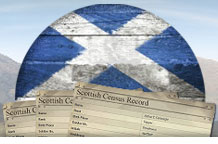Genes Reunited Blog
Welcome to the new Genes Reunited blog!
- We regularly add blogs covering a variety of topics. You can add your own comments at the bottom.
- The Genes Reunited Team will be writing blogs and keeping you up to date with changes happening on the site.
- In the future we hope to have guest bloggers that will be able to give you tips and advice as to how to trace your family history.
- The blogs will have various privacy settings, so that you can choose who you share your blog with.
Official Blogs
The father of British photography – William Henry Fox Talbot
Using Genes Reunited’s collection of historic newspapers, we take a look at the life and career of William Henry Fox Talbot, the father of British Photography.
William Henry Fox Talbot was born on February 11th 1800 in Melbury, Dorset, the only child of William Davenport Talbot and Lady Elizabeth Fox Strangeways.
Young William was born into a well-connected family. His father’s family were the wealthy Talbot’s of Lockwood Abbey and his mother was the daughter of Henry Thomas Fox-Strangeways, Lord Stavordale and 2nd Earl of Ilchester. Talbot was educated at Harrow before beginning his studies at Trinity College, Cambridge in 1817. In 1832, he married Constance Mundy, the daughter of Francis Mundy MP and was then himself elected as MP for the borough of Chippenham in Wiltshire.
An 1833 trip to Lake Como in Italy initially inspired Talbot to begin investigating photographic techniques, when the frustration caused by his unsuccessful attempts at sketching the picturesque scenery prompted him to dream up a new machine. He proposed the creation of a light-sensitive paper that could make sketches automatically and on his return to England he immediately began research at Lacock Abbey.
By the time Talbot started developing his techniques, others had already began experimenting. Thomas Wedgewood had already produced ‘photograms’, silhouettes of leaves and other objects captured on white leather coated with silver nitrate, in the 1790’s. Wedgwood’s technique had initial success but it was eventually discovered that his images faded completely following prolonged exposure to light. However in 1827 the French inventor Joseph Nicéphore de Niepce successfully captured ‘light drawings’ on bitumen, and in 1839, Louis Daguerre displayed for the first time his 'Daguerreotypes' pictures on silver plates.
Three weeks after Daguerre presented his findings to the Royal Society, Talbot presented his 'art of photogenic drawing'. His revolutionary new process was based around prints made on paper sensitized to light using silver chloride, rather than bitumen or copper-paper. Talbot called his new invention the ‘Calotype process’ and went on to develop the three primary principles of photography: developing, fixing and printing.
Simply exposing light sensitive paper to light would produce an image although it would take a great deal of time. However Fox Talbot later discovered that even with very short exposure times a faint image, invisible to the naked eye, was in fact captured on the paper.
He realised that by using various chemicals, the faint original image, which he called the ‘negative’, could be reproduced by ‘fixing’ it in a chemical solution to remove the light sensitive silver. This allowed multiple copies of the negative to be made that would not fade in bright light. This could be repeated any number of times to produce countless ‘positive’ prints of the original negative.
Fox Talbot patented his process in 1841. This attracted some criticism as Daguerre had declared his invention "free to the world", despite his agent filing a patent in England and making it the only country in the world where license fees were required to use the Daguerre. For several years in a row Fox Talbot had invested thousands of pounds in the development of the Calotype and had to defend his patent a number of times in court.
In 1842 he was rewarded with a medal from the Royal Society for his work. His negative/positive Calotype process eventually succeeded as the basis for almost all 19th and 20th century photography, completely eclipsing the daguerreotype that was rarely used after 1860.
Throughout his life Fox Talbot remained active in politics and was a moderate Reformer who generally supported the Whig Ministers. A true man of science, he was also a prolific mathematician, astronomer and archaeologist who made invaluable contributions to Assyriology, the study of ancient Mesopotamia.
William and Constance had two daughters, Rosamund, born in 1837, and Ela in 1836. Constance assisted William in his research and is widely credited as the first woman ever to take a photograph, a hazy image of a short verse by the Irish poet Thomas Moore.
William died aged 77 on September 17th 1877 at Lacock Abbey.
Click here for an image of William.
Why not see what you can find in Genes Reunited's newspaper archive? Search the newspapers here.
Comments
|
Send Message |
One of my first jobs as a trainee reporterin the Chippenham Office
of the Wiltshire Gazette and Herald (a weekly journal based at Devizes, Wiltshire) was to cycle to Lacock Abbey and interview a grandaughter of William Fox Talbot. That occurred between 1943-48, around 80 years ago but I still remember being taken to the room and being shown the window the inventor captured in one of his first successful photographs and enjoying tea and cakes with a lovely lady - but, sadly, I cannot recall the occasion that led to the interview. John (Jack) Loftin, Wantage, Oxfordshire. |

